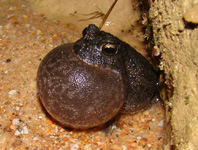Abstract
The morphology of the first zoeal stage of Periclimenes paivai Chace is described and illustrated for the first time. Larvae were obtained from three females with embryos, caught in the type locality (Cananéia, São Paulo state, Brazil). The morphological characters are detailed and compared with all previous descriptions of larvae in the genus (P. amethysteus, P. brevicarpalis, P. diversipes, P. pandionis, P. sagittifer and P. soror). The zoeae I of Periclimenes species are very similar, but P. paivai can be separated from the other six species by means of five characteristics: 8 plumose setae on the inner margin of the antennal scale, one spine on the endopod of the maxillule, one cuspidate seta on the basal endite of the maxilulle, one plumose seta on the single coxal endite of the maxilla, and one plumose seta on the endopod of the maxilla. Remarks from a comparative analysis of available descriptions of the genus are furnished.

